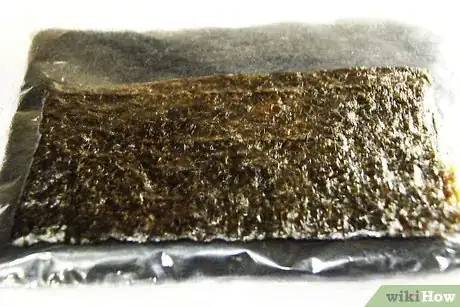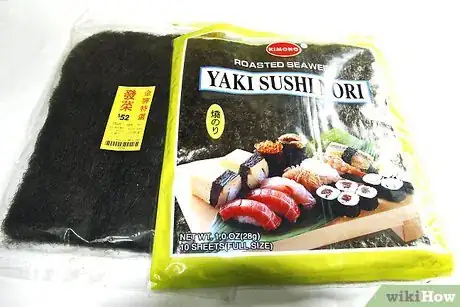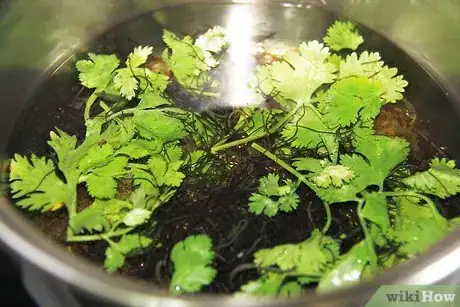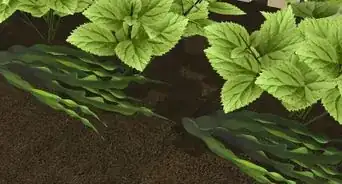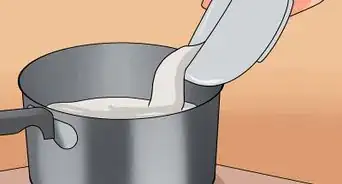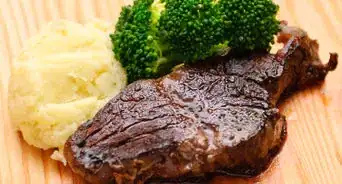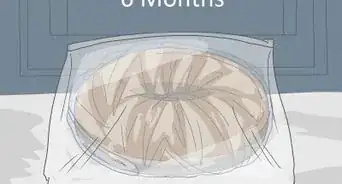wikiHow is a “wiki,” similar to Wikipedia, which means that many of our articles are co-written by multiple authors. To create this article, 11 people, some anonymous, worked to edit and improve it over time.
There are 10 references cited in this article, which can be found at the bottom of the page.
This article has been viewed 203,744 times.
Learn more...
Seaweed is also known as sea vegetables. While seaweed is low in both saturated fats and cholesterol, it has high concentrations of some vitamins and very high concentrations of many minerals. Claims have been made that seaweed reduces cancer risk and promotes weight loss. Perhaps you would like to add seaweed to your diet. This article will show you how to prepare and cook seaweed.
Steps
-
1Decide what kind of seaweed you want to prepare. There are many kinds of edible seaweed. A few of the more common are described below:[1]
- Alaria is light green and almost transparent.
- Arame is thin, wiry, and almost black.
- Dulse is dark red.
- Hiziki is thin, wiry, and almost black.
- Kelp, also known as kombu, is the largest seaweed.
- Nori is used as the wrapper for many types of sushi and is probably the most recognizable type of seaweed.
- Wakame is related to Alaria. It is also light green and almost transparent.
-
2Buy or collect and dry seaweed.
- Seaweed can be bought in many specialty supermarkets, catalogs and online. Almost all seaweed sold in stores is dried.
- Most seaweed is collected in the spring or summer. Bring a knife or pair of scissors and a bag. Different types of seaweed prefer different conditions. The wave energy and substrate of an area determine which seaweeds will grow there. Get to know your local species and where they live. Do not take all of the seaweed from one area and leave the lower portion of the frond in place. Rinse fronds gently in the ocean before you take them home.[2]
- If you have collected your own seaweed, you will probably want to dry some for storage. Spread your seaweed on newspaper and leave it in the sun or a warm room for about a week or dry it for a few hours in a warm oven.[3]
Advertisement -
3Prepare seaweed before eating or cooking by soaking it.
- Most dried seaweed must be soaked before eating. Nori is a notable exception.
- Soak dried seaweed in a large bowl of warm water until it is tender. Most seaweed will only take a few minutes to become tender and dulse becomes tender so quickly that you only need to run it under warm water.
-
4Cook seaweed.[4]
- Most types of seaweed do not need to be cooked before they are eaten, but can be served in salads, soups, casseroles etc.[5]
- Cook alaria for at least 20 minutes in soups or with grains.
- Add raw arame to salads after soaking. It can also be added to soups or sautéed or braised with other vegetables.
- Toast dulse in a pan and use it as chips. After rinsing or a short soak, it can be used in salads or sandwiches. It can also be used in soups, although it should not be cooked for more than 5 minutes.[6]
- Treat hiziki like arame.
- Add kelp to simmered dishes. Kelp is most often used in dashi.
- Wrap sushi with dried nori or dry-roast it and crumble it in soups or rice dishes. It can also be added to stir-fry.
- Treat wakame like alaria.
Community Q&A
-
QuestionWhat are some uses for dry seaweed?
 Community AnswerIf it's toasted nori, you can use it to make sushi rolls, or crumble it up and use it as a spice/flavoring in other dishes.
Community AnswerIf it's toasted nori, you can use it to make sushi rolls, or crumble it up and use it as a spice/flavoring in other dishes. -
QuestionIs the seaweed edible if it comes with the lobster?
 Community AnswerYes, it should be edible if it is touching food that you can eat.
Community AnswerYes, it should be edible if it is touching food that you can eat. -
QuestionHow to cook dry seaweed?
 IdunnoidunnoCommunity AnswerOne way is to soak the seaweed completely in water for 1-2 hrs, sometimes 3 hrs, until the seaweed is perfectly soft on both sides. For stew or porridge, just rip the seaweed in small pieces and put it in the stew to stir for longer than 5 mins but not longer than 15 mins.
IdunnoidunnoCommunity AnswerOne way is to soak the seaweed completely in water for 1-2 hrs, sometimes 3 hrs, until the seaweed is perfectly soft on both sides. For stew or porridge, just rip the seaweed in small pieces and put it in the stew to stir for longer than 5 mins but not longer than 15 mins.
Warnings
- No type of seaweed is poisonous, but some can cause diarrhea. Be careful when trying unknown seaweed you have collected.⧼thumbs_response⧽
- Seaweed can absorb heavy metals. Collect seaweed from unpolluted areas.⧼thumbs_response⧽
- Seaweed is very high in sodium.⧼thumbs_response⧽
References
- ↑ https://www.foodrepublic.com/2016/03/15/the-definitive-guide-to-edible-seaweed/
- ↑ https://www.youtube.com/watch?v=ii-q0irgNGQ
- ↑ https://www.whoi.edu/science/B/people/kamaral/pressedseaweed.html
- ↑ https://www.bonappetit.com/story/types-of-edible-seaweed
- ↑ https://www.moneycrashers.com/health-benefits-seaweed-cook-eat/
- ↑ https://www.food.com/recipe/crispy-dulse-chips-for-sea-vegetable-lovers-381378
- Bittman, Mark. 1998. How to Cook Everything. McMillian. New York, N.Y.
- https://nutritiondata.self.com/facts/vegetables-and-vegetable-products/2766/2
- https://seagrant.uaf.edu/bookstore/edibleseaweed/sg-ed-46a.pdf
